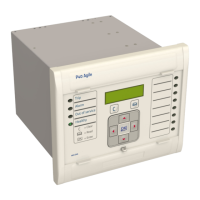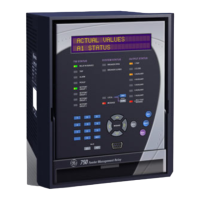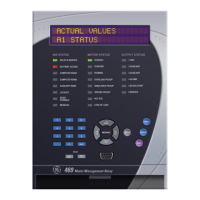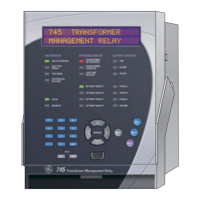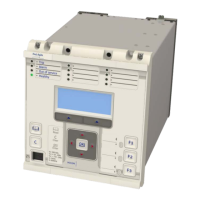GEK - 105560
12
3.2.1 Mode of Operation
Using an analog to digital converter, samples of line and bus voltages are acquired. From the samples,
and applying the discrete Fourier transform (DFT), the module and argument of both magnitudes are
obtained, and from them, the voltage and angle differences. With the measurement of the period, the
frequency slip is obtained.
Once the basic fundamental magnitudes and their derivatives have been obtained, they are compared
to the settings (see figure 7). The status of the external digital inputs is checked as well: circuit breaker
52b input, Manual mode input and Enable input. For the checking to begin, input 52b must be
activated, showing that the circuit breaker is open.
If all the synchronism conditions are met, a time delay mechanism will be tripped and when the time
limit is reached the synchronism signal SYNC will finally be obtained.
There are two different settings for the time delay mechanism:
•
If Manual input is not activated, it will remain in Continuous mode and the time delay mechanism
will work based on the first setting (setting 1-4 t cont). If, on the other hand, Manual input is
activated, it will work in Manual mode and the setting of the time delay mechanism will be the
second setting (setting 1-5 t man).
•
If the relay is in Manual mode, checking synchronism will begin when the Enable input is activated.
However, in Continuous mode, the Enable input will not effect the relay.
The synchronism signal can be obtained in the Enable and Closure output relays, as well as in the
auxiliary relays, if they have been configured for this purpose.
